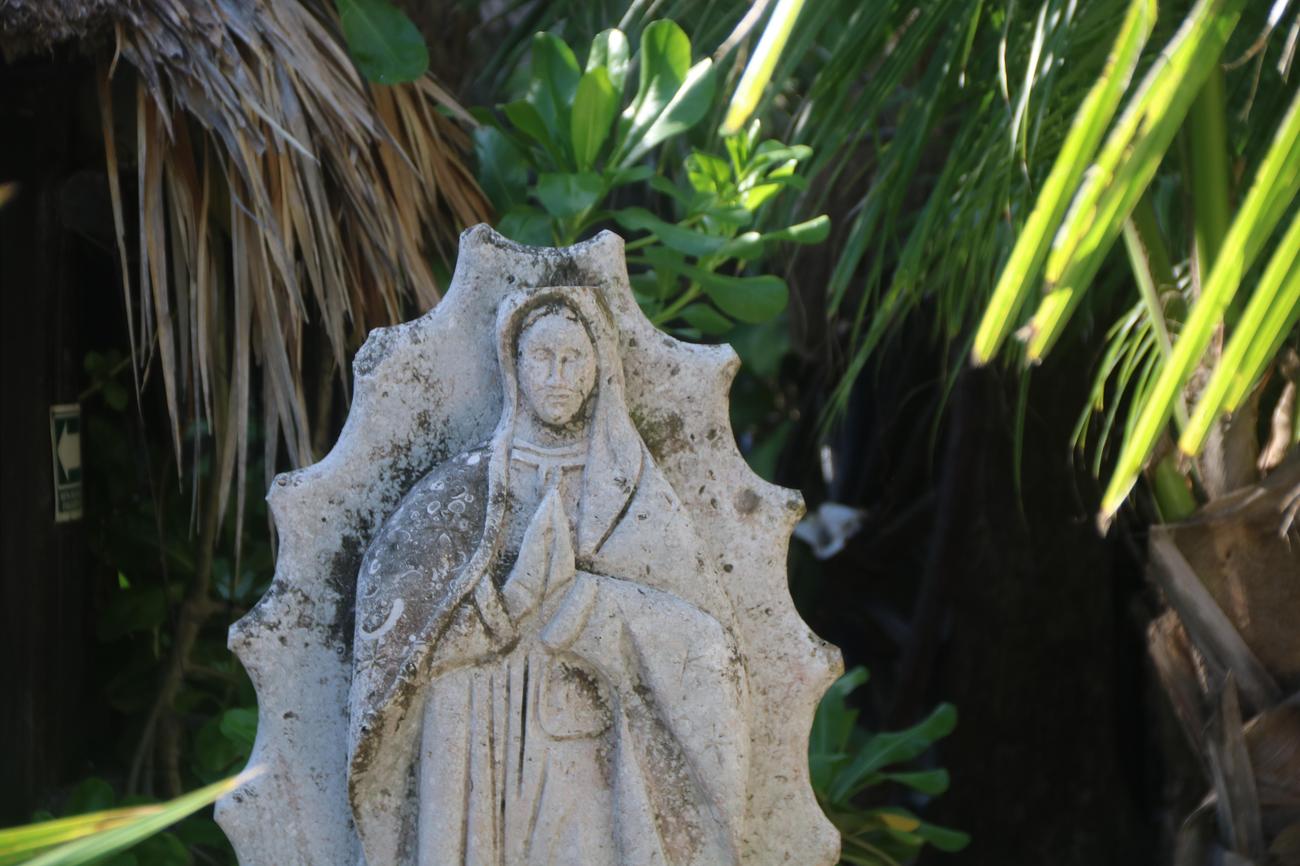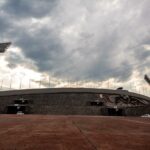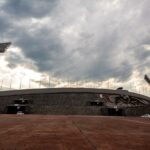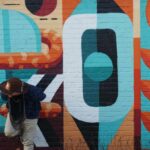Step into the captivating world of Diego Rivera’s art style, where vibrant colors come alive, powerful symbolism takes shape, and socio-political narratives leap off the canvas. As an accomplished art historian and critic, I have spent over a decade immersing myself in the intricacies of various art movements, but Rivera’s work holds a special place in my heart. With expertise in analyzing and interpreting artistic techniques, their evolution, and their impact on the art scene, I am excited to present to you an insightful and engaging article that unravels the genius of Diego Rivera’s art. Join me on this historical analysis as we explore the historical context, the profound influence, and the enduring legacy of Rivera’s captivating art style.

Diego Rivera Art Style
Diego Rivera’s art style is a vibrant tapestry of colors, symbolism, and socio-political narratives that continues to captivate art enthusiasts and scholars alike. Influenced by European contemporary masters such as Cubism and Post-Impressionism, Rivera’s unique style also draws inspiration from the rich pre-Columbian history and culture of Mexico. It is through simplified forms, pure colors, and clear compositions that he brings to life various subjects including workers, peasants, festivals, and social and political issues.
Rivera’s art style finds its expression in bold, large-scale murals that played a crucial role in the Muralist art movement in Mexico. These murals not only revived the ancient fresco painting technique but also brought art out of galleries and into public spaces where it could be accessible to all. His murals became powerful tools for storytelling, reflecting the stories of workers and Mexican society during the Mexican Revolution of 1910.
Inspired by Mexican folk art and pre-Hispanic cultures, Rivera’s paintings feature large figures with simplified lines and rich colors, creating a striking visual impact. He believed that artists should serve the community, and this belief is evident in his art, which aims to bring art to the masses through an easily accessible visual language.
Rivera’s art style is more than just an aesthetic expression; it is deeply rooted in history and social consciousness. His work seeks to address social and political issues, offering a window into the struggles and triumphs of the Mexican people. His art serves as a vehicle for activism, inspiring conversations and challenging societal norms.
In analyzing Rivera’s art style, it is impossible to ignore its historical and cultural context. It is through his exploration of Mexican history and culture that he creates a visual language that resonates with his audience. Rivera’s work serves as a bridge between the past and present, reminding us of the importance of understanding and appreciating our heritage.
As we delve into Rivera’s art style, we uncover a world where colors hold profound meaning, where simplified lines carry a powerful message, and where the stories of the marginalized find a voice. His art is a testament to the power of visual storytelling and the enduring legacy of one of Mexico’s greatest artists.
Rivera’s art style continues to be celebrated and studied by art historians, ensuring that his legacy lives on. By delving into the captivating world of his art, we gain a deeper appreciation for his contributions to the art world and his exploration of social and political themes. Diego Rivera’s art style serves as a reminder that art has the power to educate, inspire, and bring about meaningful social change.
“Diego Rivera’s art style is an exquisite blend of vibrant colors, powerful symbolism, and socio-political narratives that continue to resonate with audiences around the world.”
Diego Rivera, the legendary Mexican artist, is known for his captivating murals and revolutionary spirit. But did you know that there are fascinating facts about Diego Rivera that will leave you amazed? From his tumultuous love life to his controversial political views, Rivera’s life was as intriguing as his artwork. Discover more about this enigmatic artist by exploring our curated collection of interesting facts about Diego Rivera. Click here to dive deeper into the life and work of Diego Rivera: interesting facts about diego rivera.
Diego Rivera Art Style is renowned for his iconic murals that have captivated art enthusiasts for decades. His masterpieces, such as “Man at the Crossroads” and “Detroit Industry Murals,” showcase his exceptional talent and unique perspective. Rivera’s ability to seamlessly blend autobiographical elements with revolutionary themes is what sets him apart as an artist. His artworks reveal glimpses of his personal triumphs and struggles, making each piece a glimpse into the artist’s soul. To explore the depth and significance of Diego Rivera’s artwork, click on Diego Rivera iconic murals, Diego Rivera autobiographical elements, or Diego Rivera revolutionary themes.
Diego Rivera: Epic Artist
[youtube v=”mnI9y8NlaPY”]
Diego Rivera, a Mexican icon and the most famous painter in his country, was a man larger than life who tackled big ideas on a massive scale. Born with the lengthy name Diego Maria de la Concepcion Juan Nepomuceno Estanislao de la Rivera y Barrientos Acosta y Rodriguez, he was thankfully shortened to Diego Rivera. Best known for his physical stature, his marriage to fellow artist Frida Kahlo, and his iconic mural paintings, Rivera left an indelible mark on Mexican art.
Rivera was born on December 8, 1886, in Guanajuato, Mexico, alongside his twin brother, Carlos. However, tragedy struck early in Diego’s life when his brother passed away at the age of two. This loss haunted Diego throughout his life. His parents, both school teachers, instilled the value of education in him. His father was also an editor for a liberal newspaper, which sparked Diego’s interest in politics. From a young age, Diego displayed a passion for art. By the age of two or three, he began drawing, covering the walls and furniture of his family’s home. In response, his parents dedicated a room for him, covering it in blackboard.
In 1891, Diego’s sister Maria was born, and shortly after, the family moved to Mexico City. At the age of 10, Diego started taking night classes at the San Carlos Academy of Fine Arts before transferring full-time. The academy had many inspirational teachers, but Diego’s greatest influence came from a local engraver named Jose Guadalupe Posada, who owned a shop near the school. Posada’s affordable prints made his work accessible to everyone, and Diego was captivated. In 1906, Diego graduated with honors but had a strong desire to continue studying art in Europe.
Using his father’s political connections, Diego and his family traveled to Veracruz to visit the governor. Impressed by Diego’s talent, the governor agreed to sponsor his further studies in Europe. In 1907, Diego arrived in Madrid, Spain, and worked in the studio of the Spanish painter Eduardo Chicharro. During his time in Madrid, he discovered the works of Spanish Renaissance artists and began developing his own technique. Two years later, he moved to Paris, where he delved into the world of Impressionist and Post-Impressionist art. The following summer, he traveled to Bruges, Belgium, to study the works of Flemish artists and painted “The House on the Bridge” in 1909. Later that year, Diego returned to Mexico for an art exhibition, coinciding with the plans to overthrow President Diaz, which eventually led to the Mexican Revolution.
In Paris, Diego reunited with a fellow artist, Angelina Beloff, and the two began living together in 1911. It was during this time that Diego was exposed to the art style known as Cubism. Influenced by artists like Pablo Picasso and Georges Braque, Diego incorporated elements of Cubism into his work. By 1913, Diego had fully embraced Cubism as his own artistic style. In 1916, Diego and Angelina welcomed their first child, Diego Jr., into the world. Sadly, the child faced health issues and passed away the following year. During this tragic time, Diego began an affair with Russian artist Marevna Vorobev-Stebelska, who gave birth to their daughter, Marika, four years later.
Diego’s Cubist phase was relatively short-lived, coming to an end in 1917 after disagreements within the movement. He then turned to the influences of post-impressionist painters such as Henri Rousseau and Paul Cezanne. In 1919, Diego met fellow Mexican artist David Alfaro Siqueiros, and the two shared political ideals and discussed their passion for creating art that could be viewed by everyone. Together, they traveled to Italy, where they studied art for 17 months, focusing on Italian Renaissance-era fresco paintings. Inspired by this, Diego and Siqueiros believed that large-scale fresco-style murals were the future of Mexican art.
In 1921, Diego returned to Mexico, where he was met by Jose Vasconcelos, the newly appointed Minister of Education. Vasconcelos spearheaded major changes in the Mexican school system, including the addition of art classes. He invited Diego and a group of artists to the Yucatan Peninsula, where they explored ancient Mayan ruins. This trip fueled Diego’s lifelong passion for collecting Pre-Columbian artifacts. During this trip, Diego shared his dream of creating public murals with Vasconcelos, who was immediately drawn to the idea. Thus, Diego’s first mural project, “The Creation,” was born and painted at the Bolivar Amphitheater in the National Preparatory School. Inspired by Italian fresco painters, Diego melded his Cubist and post-impressionist styles with Aztec designs. It was during his time at the National Preparatory School that he first encountered Frida Kahlo, a 15-year-old student who admired his work.
In 1922, Diego married his first wife, Guadalupe Marin, and continued his artistic journey. Alongside other artists such as David Alfaro Siqueiros and Jose Clemente Orozco, he formed the Syndicate of Technical Workers, Painters, and Sculptors. The group aimed to create public artwork and shared communist ideals. Diego’s second significant mural project was at the Ministry of Education, a massive undertaking that required a team of assistants. These murals celebrated the working class and the beauty of Mexico. During this time, Diego also painted a series of murals at the Agricultural School of Chapingo. In 1924, his daughter Guadalupe was born, followed by Ruth in 1927.
In 1927, Diego’s tumultuous personal life led him to leave Mexico after being invited to Russia to commemorate the 10th anniversary of the Russian Revolution. He was commissioned to do a mural for the Red Army Club in Moscow but faced numerous challenges and conflicts with the Soviet regime. Before completing the mural, he was asked to leave the country due to allegations of anti-Stalin activities. Upon returning to Mexico, he was expelled from the Communist Party. Despite these setbacks, Diego continued to create art and left a lasting legacy.
In 1928, Diego worked on a series of murals at the Palace of Cortes in Cuernavaca, which garnered admiration and praise. It was during this time that he reconnected with Frida Kahlo, who had grown as an artist in her own right. Soon after reconnecting, Diego and Frida began a romantic relationship and were married in 1942. Their marriage was troubled and marked by infidelities on both sides. They divorced in 1939 but continued to maintain a close relationship, frequently seeing each other.
Over the years, Diego continued to receive mural commissions and created breathtaking works. Notably, he painted murals at the San Francisco Stock Exchange and the Detroit Institute of Arts. However, his most controversial mural was the ill-fated commission at Rockefeller Center in New York City. Despite protests, Diego included the face of Vladimir Lenin in the mural, causing public outrage. The mural was destroyed, but later recreated as “Man at the Crossroads.” Diego’s fame continued to grow, and his work was exhibited worldwide.
Diego’s personal life took its toll on him, and he faced numerous obstacles in pursuit of artistic expression. In 1952, he was invited to the Mexican exhibition in Paris, where he created a pro-Stalin and anti-West propaganda piece. However, Diego’s ties to the Trotsky family and his anti-Stalin views prevented him from rejoining the Communist Party. He dedicated his later years to teaching and completing murals while continuing to share his political message.
Diego Rivera’s life and work were intertwined with Mexico’s tumultuous history. He was a prolific artist whose murals depicted the struggle and resilience of the Mexican people. Today, his art is celebrated for its grand scale, vivid colors, and powerful social commentary. Diego’s artistic vision and political ideals cemented his position as an epic artist and an enduring icon of Mexican art.
FAQ
Question 1
What art movements influenced Diego Rivera’s art style?
Answer 1
Diego Rivera’s art style was influenced by European contemporary masters such as Cubism and Post-Impressionism, as well as the pre-Columbian history and culture of Mexico.
Question 2
What subjects did Diego Rivera depict in his artworks?
Answer 2
Diego Rivera depicted various subjects such as workers, peasants, festivals, and social and political issues in his artworks.
Question 3
What role did Diego Rivera’s large-scale murals play in the art movement?
Answer 3
Diego Rivera’s bold large-scale murals played a crucial role in the Muralist art movement in Mexico and stimulated the revival of fresco painting in Latin America.
Question 4
How did Diego Rivera’s personal life and associations make him a controversial figure?
Answer 4
Diego Rivera’s controversial figure status was due to his radical beliefs and his personal life and associations.
Question 5
What is Diego Rivera’s legacy in the art world?
Answer 5
Diego Rivera’s legacy has left a significant impact on the art world, particularly in terms of his contributions to mural painting and his exploration of social and political themes.
















